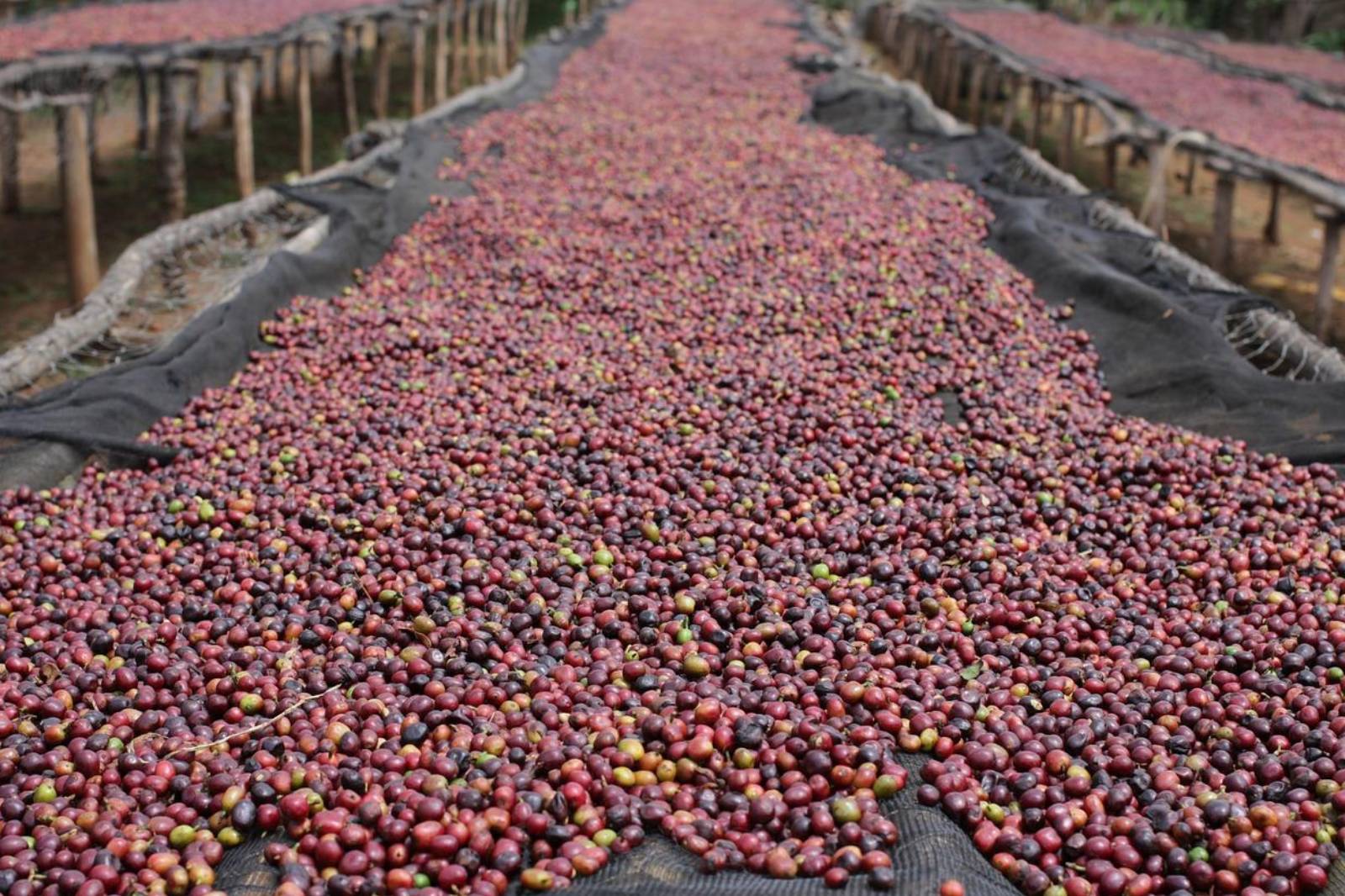Ethiopian Sidamo is the reason why people are mindblown about naturals from the coffee motherland. It is one of the coffees that has potential to push both hardcore drinkers and beginners over the edge into coffee snobs. The beans have an unmatched depth of flavor and sweetness often attributed to the region’s unique landrace varieties (mistakenly referred to as heirloom varieties).
The coffee industry, for decades, has ignorantly thought Ethiopia to be an origin purely wild and crazy with nature being fully in control of the varieties; the rest of the world is thought to be more selective with the varieties they grow. At any rate the uniqueness of the coffee varieties in Ethiopia is impressive, but they don’t all occur naturally. The country has a robust coffee industry and an Agricultural research center (JIMMA), that catalogues, selects, and improves coffee varieties. Sidamo coffee has various unique cup profiles because the region’s terroir is perfect for the varieties developed for it.
Sidamo - The Famed Coffee Region
Sidamo (not Sidama, thanks to Starbucks and an annexation era by the emperor in the 20th century) is one of the trademarked coffee-producing regions in Ethiopia. The others are Harrar and Yirgacheffe. Read our detailed elaboration of the Ethiopian Yirgacheffe, another Ethiopian coffee overlord, here. Sidamo is a large province that was bigger before political changes affected its borders in the 90s. For this reason, coffees from the original Sidamo region and the adjacent areas are also called Sidamo. Being so massive, the region has 23 administrative areas locally known as woredas.
Sidamo has a legacy of high-quality coffees with great diversity. About a decade ago, it was hard to sell Ethiopian coffee if it wasn’t labeled Sidamo. Everyone was crazy about the origin and it’s all for the right reason.
Firstly, the lush and green coffee growing region is located in the fertile highlands of the rift valley, south of Lake Awasa. Secondly, on top of being fertile, the region has the ultimate conditions for growing coffee. The altitude ranges from 1500 to 2200 meters above sea level, the rainfall is sufficient, and the temperature is optimal. At such high elevation and cool temperature, the coffee cherries ripen slowly, allowing the development of sweet, acidic flavors unique to Sidamo coffees. One thing that sets the Sidamo terroir apart is the multiple micro-climates and varying soil types. They cause such significant differences in coffee grades and cup profiles, even from the same farm.
Sidamo Coffee Farming - What’s It Like?
Haciendas are almost non-existent in Ethiopia. Not much Ethiopian coffee is grown on large estates. The Garden coffee system is the most popular way of farming coffee in Ethiopia. Forest coffee comes second. Farmers clear the bushes and weeds in forests for shade regulation and plant coffee seedlings. The coffee plants grow under the forest canopy and are harvested by the locals.
Tesfeye Bekele, one of the pioneer farmers of coffee in Guji, where our GujiSidamo beans come from, says that they began growing coffee to conserve the forest trees that survived a wildfire. They lost over 5000 trees, and people rushed to settle in the burned areas of the land.
He narrates, “Growing coffee was a massive cultural shift for us. Originally, the Oromo people were cattle farmers. The community was reluctant to venture into coffee and wondered why I was wasting time and money preparing seedlings.” What began as a passion to conserve the forest has now birthed a vibrant coffee origin with over 15 million coffee trees. And, no they didn’t fell all the trees. According to Bekele, the Oromo culture has great reverence for big trees. “It is uncultural for us to cut big trees. There are selected trees that our culture forbids us from cutting. A big tree is seen as a symbol of security as it offers shade and supports the environment during drought.”
While semi-forest farming is still practiced in some regions, garden coffee is more common in Sidamo. Farmers grow coffee on modest plots. The coffee is mostly measured in the number of trees rather than hectares. The smallholder farmers intercrop coffee plants with subsistence crops. Farm work is done by household members, from planting to processing. After harvesting the cherries, the farmers take them to collection centers or directly to the washing stations for processing. The region has over 200 washing stations and 50 cooperatives spread across the 23 woredas.
The majority of the farmers are members of cooperative societies. The cooperatives are involved in the entire coffee chain, from training and helping farmers harvest cherries correctly to processing and exporting the produce. They sell the coffee to international markets and distribute the dividends to the individual farmer members.
Cooperatives can come together to form a union. For example, the Oromia Coffee Farmers Union, where Planet Bean sources its coffee, has 413 cooperatives with over half a million farmer members. The union supports farmers through the member primary cooperatives with finances, technical assistance, market access, and training, ensuring quality and productivity.
Sidamo Coffee Cup Profile
The cup profile from Sidamo is dramatically varied. You will buy two bags from the same micro-region or farm and taste strawberry fanta from one and blueberry muffin with hints of kiwi from the other. And no, it is not a mix-up by your local roaster. Nearly all the coffees can be traced to their origins now, thanks to new reforms in the country’s trade policy. The direct-trade policy framework allows coffee export through direct channels, making traceability easier, and ensuring premium quality to improve both farmer and consumer satisfaction. Even the cooperatives and unions have a solid traceability system.
A good natural from Sidamo, roasted and brewed well, should be fruity, more like a berry bomb with a creamy body and well-balanced acidity. Some regions, like Chire, at an elevation of 1900 - 2100 meters above sea level register notes of nuts, dry fruits and wine. Others like Bensa have notes of tropical fruits like strawberry and peaches.
Floral aromas (bergamot, hibiscus) and sharp citrusy notes (lemon, lime) are common with washed Sidamos. A lot of them have tea-like notes as well. Arosesa, a region in east Sidama, is known for washed varietals that taste like jasmine, black tea, and cane sugar
Planet Bean Sidamo Coffee
If you have wandered in vain looking for an Ethiopian natural, try our sun-dried GujiSidamo beans. The medium roast Ethiopian Sidamo is the best coffee to give anyone who doesn't believe coffee has distinct flavors. Its fruity aroma and jam-like flavor are upfront. Its sweet flavor and creamy body make its cup profile more complex. The Dark roast is significantly different from its lighter compadre, with striking flavors of juniper berries, cedar, and a smoky campfire. The unique tasting notes are nicely rounded by a robust sweetness.
Barbara Atieno
Nairobi, Kenya

